Instruction is in full swing this fall semester! We gave 27 presentations in October alone for 527 participants. Here’s a small sampling of the course-related instruction sessions we taught during the month.
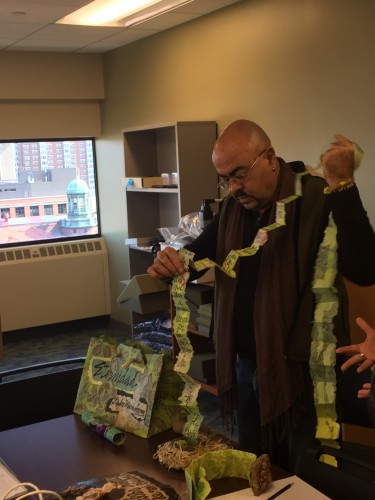
Estévez shows students Eternidad (2014), a book he created with poetry by Dulce María Loynaz
AMCULT 313.001 Cuba and Its Diaspora: Issues in Race & Ethnicity
With Artists' Books curator Kristine Greive, students in Ruth Behar's class had the opportunity to interact with a range of Cuban artists’ books focusing on the work of Rolando Estévez and Ediciones Vigía. These works range from traditional structures to more sculptural forms. Estévez himself was on hand to answer questions and demonstrate the “performance” of opening and reading these books.
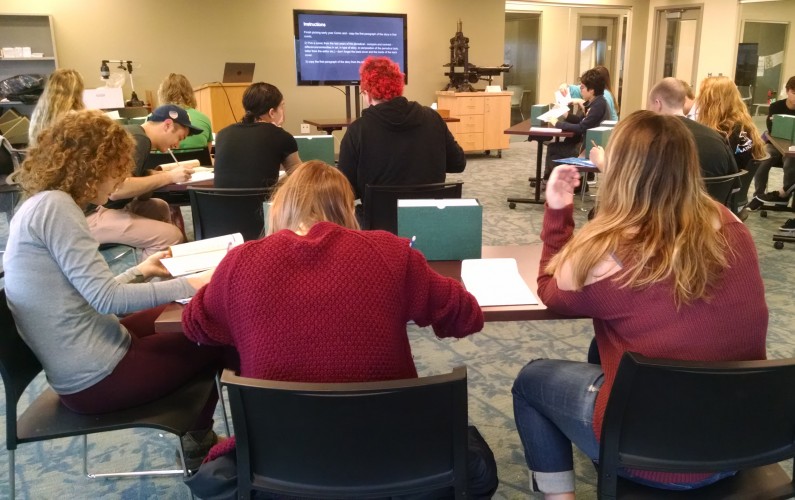
Students in GERMAN 325 examining materials.
GERMAN 325.001 German Science Fiction/Fantasy
Hosted by Reader Services Librarian Kate Hutchens, students analyzed cover art, contents, and paratexts in Terra: Utopische Romane Science Fiction, a landmark science fiction novella series from West Berlin (1957-1968). Last year we acquired the only full-run of of this series held in a U.S. library in order to support this area of research and teaching for Prof. Mary Rodena-Krasan. This class group compared early and late issues to discern the evolution of both the publication and popular culture of the time.
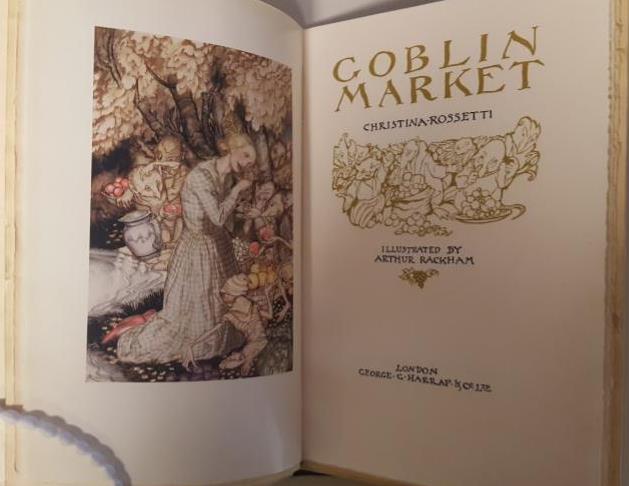
Goblin Market, 1933 ed. illustrated by Arthur Rackham, viewed by students in ENGLISH 318.002
ENGLISH 318.002 Children's Literature and the Invention of Modern Childhood
Children's Literature curator Juli McLoone gave Lisa Makman's students a brief overview of the history of English children's literature from a book history perspective. Students then dove into exploring illustrated editions of classic children's works. Students are currently visiting the reading room as part of their assignment to compare and contrast multiple editions of the same work.
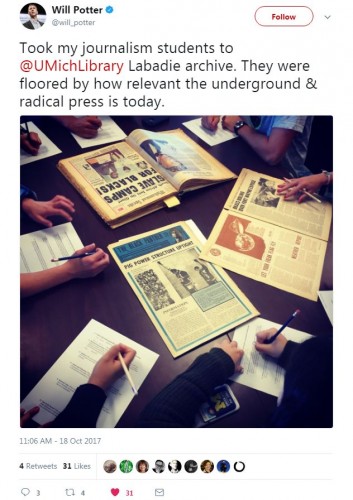
Tweet from Will Potter
COMM 439.001 Rebel Reporters: Investigative Journalism and Social Change
Under the guidance of Joseph A. Labadie Collection curator Julie Herrada, students in Will Potter's class examined radical press publications from earlier time periods to see how they differ (or not!) from present-day reporting.
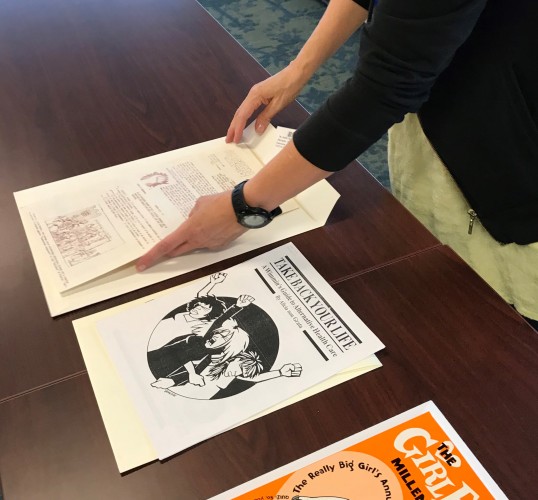
Curator Julie Herrada laying out materials for AMCULT 311.001
AMCULT 311.001 Sex and Gender in US History
Curator Julie Herrada introduced students in Mary Kelley's course to a selection of feminist publications (mainly from Ann Arbor) as exemplars of primary source material they might analyze for their papers.
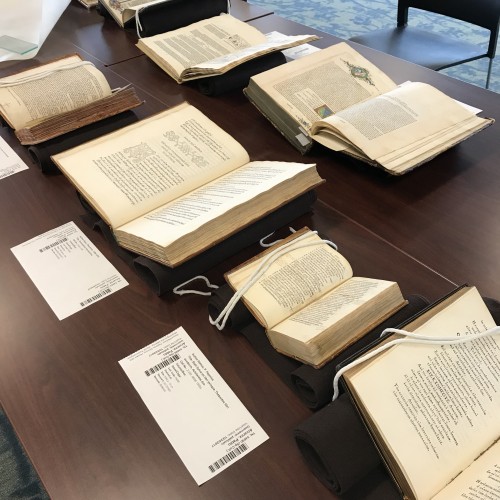
Early printed books laid out for HISTART 353.001
HISTART 353.001 Meaning in the Making: Visual Technologies
Curator Pablo Alvarez introduced students in Patricia Simmons' class to how the transmission of a text is shaped by the format and materials in which it circulates and is received. Students examined a wide selection of documents including ostraca, papyri, wax tablets, medieval manuscripts, and incunabula, and answered a set of anlytical questions.
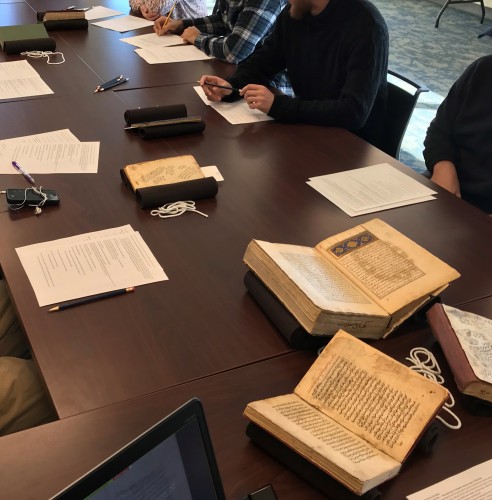
Students in NEAREAST 421 preparing to examine a selection of manuscripts carrying Sufi texts.
NEAREAST 421.001 Islamic Mysticism: Sufism in Time and Space
Curator Evyn Kropf introduced students in Alexander Knysh's class to the Islamic Manuscripts Collection and to the evidence that manuscripts can provide for the study of how texts were composed, circulated and studied. Students closely examined a selection of manuscripts carrying Sufi texts, analyzing their material and textual features and considering the implications of those features. Thanks to our colleagues in LSA Instructional Support Services, students in a parallel class at St. Petersburg State University, Russia were able to join the session virtually.
Of course instruction continues, and we look forward to our upcoming sessions!